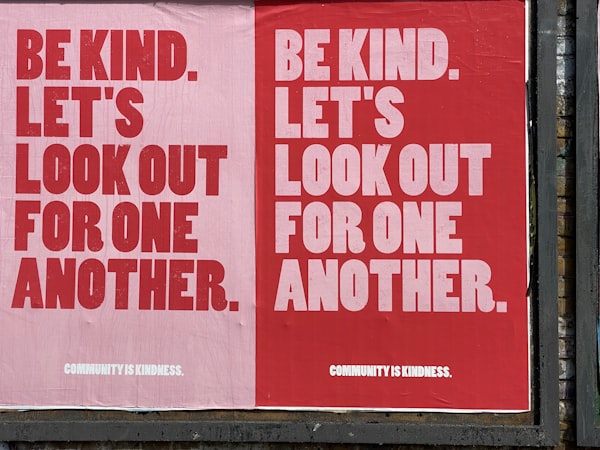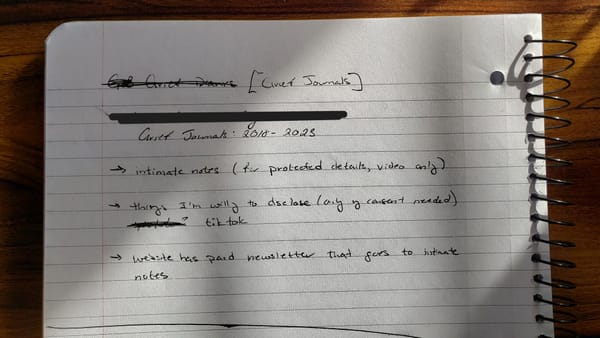Using communication models like training wheels
Reflections on how communication models are helpful for new learners, but meant to be retired

November and December of 2022 were awful months for me.
It was my first holiday season without my family after going low/no contact with them and I was really sad about missing out on the holiday traditions I’d grown up with.
I tried my best to ignore the emotions coming up for me, and the only thing cluing me into my feelings were my coping strategies of binge eating and spending.
At the time, I was in a group chat with my closest friends and had mentioned a few times the issues going on with my family and how I was sad to be spending the holidays without them. And instead of offering sympathy or inquiry into my experience, they mostly offered things like “Oh that sucks, I’m sorry” and moved the conversation along.
I was hot. Heated. Irate.
Going into January of 2023, I told my friends I was leaving the group chat because I was having a hard time but that I’d appreciate it if people reached out to me.
And no one did.
For about two months, every therapy session I had was me venting about my friends not caring about me, and how I was going to cut them out of my life. But thankfully, my therapist is great at her job, and instead, she helped me realize that my anger was connected to a need for connection and understanding not being met.
She recommended I use the Dialectical Behavioral Therapy technique called DEAR MAN to prepare a script to talk to my friends about this experience. The result of those conversations was greater awareness about my experience, honesty shared between us about the nature of our relationship and where we wanted it to go, and more clarity on my part about why my friends were unable to show up for me in the way that I wanted.
Since learning about and practicing the DEAR MAN technique, I’ve had to rely less on the actual communication model and have leaned more into connecting with my emotional experience and getting clear about what I am looking for in my relationships.
Now, when I need to have difficult conversations with people, I don’t need to do a Google search for anything. I just reflect on how I feel about a situation and what is it that I’m really looking for from the other person.
Much of that work is about connecting with your heart and following the wisdom that flows.
Today I watched a video of Dr. Roxy Manning, a psychologist and nonviolent communication practitioner, explaining what nonviolent communication is.
According to Dr. Manning, nonviolent communication serves two functions:
- It’s a story about how the world works. A story about how anything a person does is an attempt to meet a need and that “the only reason we take action, is because there’s something that we value that we are trying to attend to.” Understanding this allows us to interact with others with greater compassion and empathy.
- It’s a communication model that encourages you to make observations, connect with the feelings present, recognize the underlying universal need(s), and create requests that could satisfy that need.
As she explained the nonviolent communication model, I realized that this is similar to the DEAR MAN technique, which tells me that the actual communication model a person uses is irrelevant.
Because many of us didn’t grow up witnessing healthy communication, it’s hard, if not impossible, to know where to start. And this is where communication models come in. You can learn how to communicate using them as a guide, but as Dr. Manning emphasizes in the video, they are meant to be training wheels that you retire once you get the hang of it.
Ultimately, the real power comes from being able to understand and articulate your wants, needs, and desires. Doing so opens new pathways for you to meet your own needs or to make requests of others to help you satisfy them. In this way, we shift from blaming and shaming others for why or how they did something and put the focus on resolving the tension.
And from that perspective, communication skills are available and accessible to anyone with the capacity to learn them.
You don’t need a specialized degree or certification to learn how to slow down enough to understand your emotional realm. Some ways I’ve seen people do this is through good ol’ therapy, journaling, and talking to friends who can reflect back to you the feelings and needs they hear expressed.
I’m sure we all want to learn how to be better communicators and to be able to navigate conflict with greater ease, and learning about different communication models can be incredibly helpful in that process, but eventually the training wheels have to come off, and we must learn to trust our inner wisdom.
✨ Kiana





